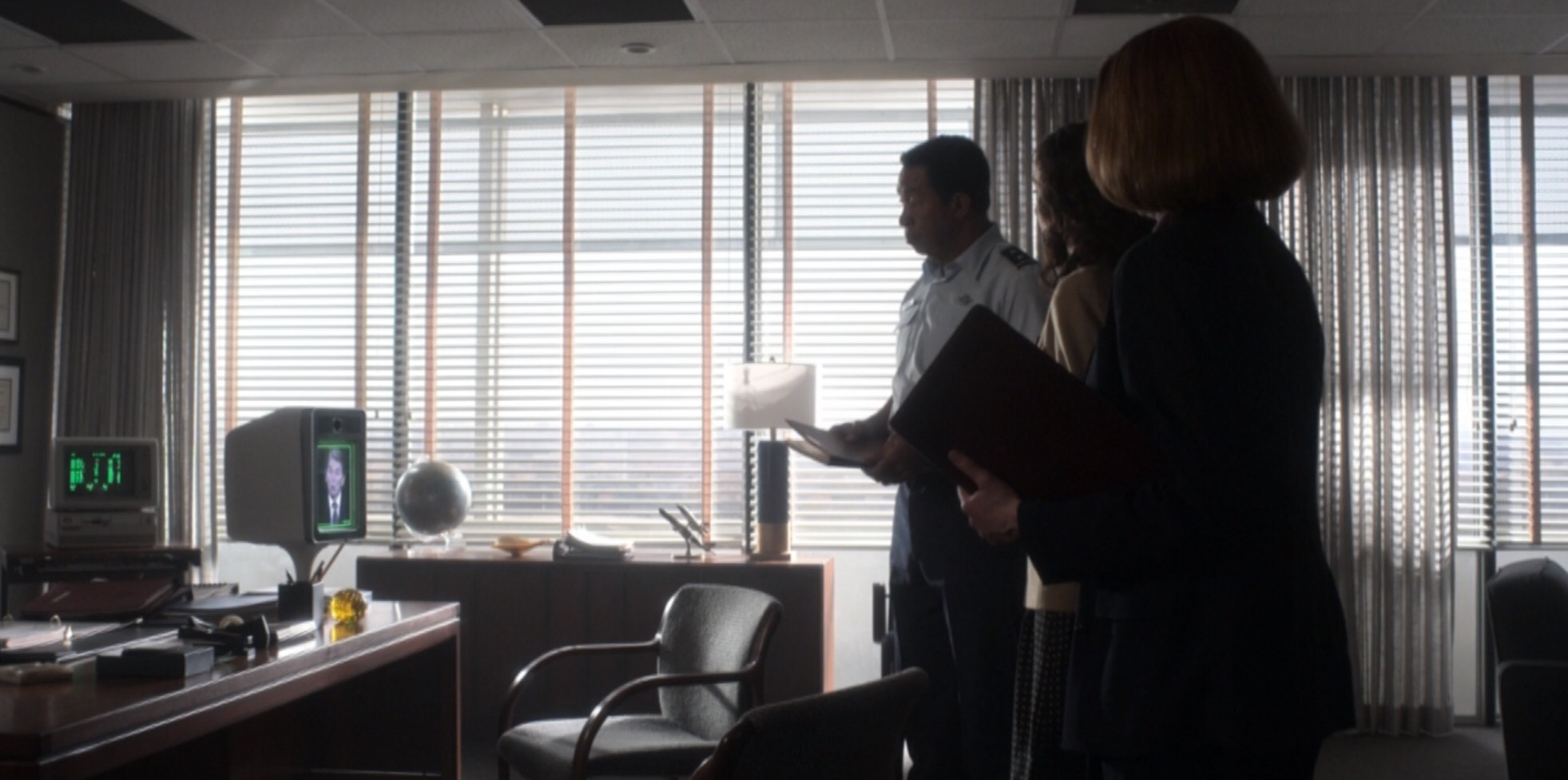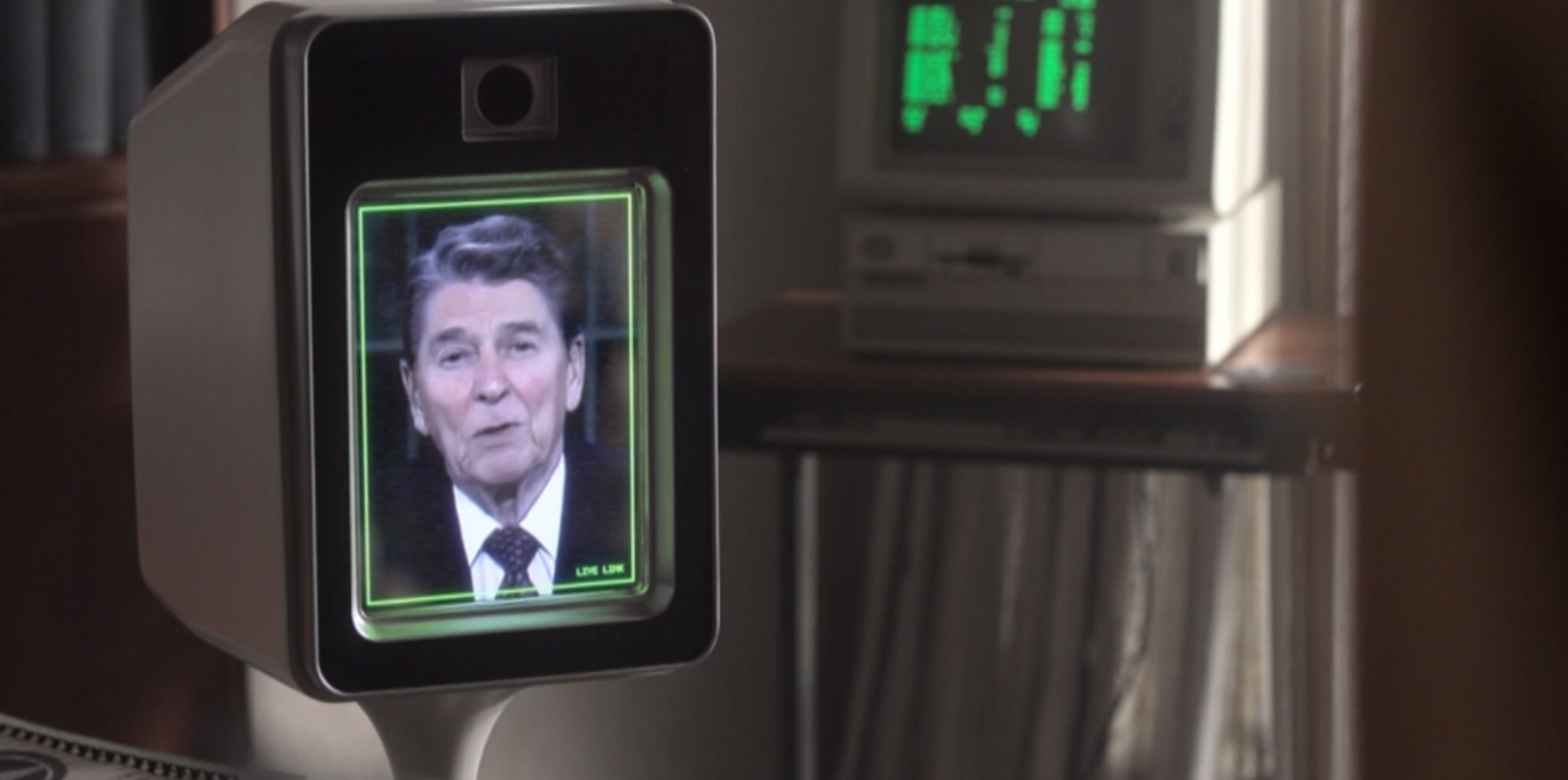'For All Mankind' Brings the Dead Back to Life in Season 2
From John Lennon to Ronald Reagan, the Apple TV+ alternate history effectively utlizes famous figures.

This post contains For All Mankind spoilers.
More than 25 years ago, Forrest Gump (Tom Hanks) sat next to John Lennon on The Dick Cavett Show. To have a conversation with a dead man using pre-existing footage was groundbreaking at the time and this is one of several moments during the Oscar-winning movie that utilizes digital compositing technology. Since Robert Zemeckis’ 1994 hit, the ability to bring the dead back to life via CGI has seen stars like Humphrey Bogart and Audrey Hepburn appear in commercials and allowed actors to reprise Star Wars franchise roles (even if they are no longer alive). The “uncanny valley” is difficult to avoid — particularly when the audience is aware the actor is deceased — but deepfake technology is making it easier to create a lifelike double. There are many disturbing ramifications that could turn this tech into a Black Mirror special brought to life, but from an entertainment perspective, it is another tool in the period arsenal. Lennon appears in Season 2 of Apple TV+’s alt-history drama For All Mankind, which is particularly notable as it is set more than two years after the singer and activist was killed outside his New York City apartment.
The premise of Ronald D. Moore’s retelling of the Space Race centers on the Soviets beating the United States to the moon landing and how this leads to NASA gaining more funds — including starting a program for female astronauts. The ripple effect includes leaving the Vietnam conflict earlier and Ted Kennedy returning to Washington DC rather than heading to Chappaquiddick in July 1969. In this reality, Mary Jo Kopechne didn’t die that weekend and Kennedy became the 38th President of the United States after winning the 1972 election. During the first season, neither Nixon nor Kennedy interacted with the main cast and voiceovers accompanied images of the men rather than actual footage (manipulated or not). The real Nixon tapes were mined for diatribes and some archival video was also altered. Voice artist Jim Meskimen played both presidents in Season 1, as well as John Lennon in recent episodes. His impression repertoire is broad and is highlighted in this deepfake extravaganza. Jeff Bergman takes on Johnny Carson and Ronald Reagan vocals in Season 2 — both feature in scenes with other For All Mankind regulars.
Jumping forward from 1974 to 1983 between seasons means there is a large swath of time to fill in the blanks. Normally viewers could have a quick Wiki of the major events, but For All Mankind is predicated on the major changes to the timeline. A montage at the start of the Season 2 premiere showcases moments that will feed into the deepfakes to come. Reagan successfully won his first election a term earlier than in reality (beating a Kennery hurt by a different Mary Jo Kopechne scandal), followed by a subsequent second term. “If we desire peace, the way to achieve it is through our strength,” he remarks in a speech using a phrase he embraced to reinforce the military’s symbolic and literal importance. This was the year of the real "Evil Empire" speech at a time when the Cold War began to heat up again. Conflict is brewing in the alt-timeline and while the Soviet invasion of Afghanistan is sidestepped in favor of spending this money on space, it doesn’t mean the two Super Powers aren’t finding other ways to contemplate WWIII.
This opening highlights reel includes fun references that never come up again like Prince Charles married Camilla. Other clippings focus on events directly impacted by the work on the moon; the 1979 Three Mile Island nuclear accident in Pennsylvania is a near-miss thanks to technology that came out of Jamestown. Elvis Pressley still died but John Lennon’s assassination was thwarted, and Pope John Paul II was killed — when in reality he survived. There is no word on whether John Hinckley Jr. tried to shoot the president in 1981 but Lennon continues his quest for peace during this invented timeline. In Forrest Gump, it is suggested that Forrest inspired the “Imagine” lyrics, whereas in the For All Mankind universe, TV appearances feature missives directed at a president who wasn’t inaugurated until after his death:
“If Ronnie Reagan thinks peace is a cliché from the ‘60s, that’s his problem. Peace is forever. Come on, Nancy. Tell your husband to come back to bed and grow his hair.”
Talk of a Beatles reunion as part of a planned “Concert for Peace” is also on the table and this pop culture “What If?” feeds into the Panama coup running parallel to the fraught situation on the moon. One reason why this Lennon reference doesn’t come across as a gimmick is because it never overshadows the main storyline and is part of the background noise when characters are inevitably watching TV.
The latest updates, reviews and unmissable series to watch and more!


Another pop culture thread running through this series that requires digital manipulation is Tracy’s (Sarah Jones) appearances on The Tonight Show Starring Johnny Carson — in person and then remotely from the moon. In fact, it is on Johnny’s sofa that the astronaut celebrity tells the world (and her ex-husband Gordo) she had an impromptu wedding in Las Vegas. In this scene, the footage seamlessly cuts from the black and white set in the Outpost bar to Gordo’s (Michael Dorman) color television. In an interview with The Ringer, For All Mankind writer and executive producer Ben Nedivi explains how this was achieved, “We created a part of the Johnny Carson set, had to have her sit exactly where a guest would sit there, and then had to merge the two, the reality and the tape from back in the day, together.” They used actual footage of an 18-year-old Diane Lane showing the talk show host a high school ring and worked the visual effects magic. Rather than an uncanny valley experience, it is as if we are watching Tracy conversing with the beloved late-night host. Carson interviews NASA’s superstar when she is on the moon, talking to her remotely through the advanced video technology (how very 2020 of them). They even have a good rapport while Tracy is flung out of space.
Perhaps the most significant use of visual effects on a famous figure is Ronald Reagan, ranging from new speeches to conversations with the main cast via video conferencing — cell phones and electric cars are also a feature of this 1983. In this week’s episode “And Here’s To You,” after successfully taking back the mining site on the moon, Reagan calls for a status update and to offer his congrats. If you combined a speed camera with the iPad stands used in McDonald’s then you have the ‘80s version of Zoom at NASA. The shot of Reagan’s floating head doesn’t come as a surprise as we have seen this tech used throughout the season. The straightforward scene also includes a permanent promotion offer from the president to Ellen (Jodi Balfour) and rather than coming across as a flashy fad, the nature of this chat is pretty standard for this show. Moderation is important when threading visual effects into the narrative and as with the historical shifts, the key to making it work is to not veer too far away from our version of the world. Considering the promotions characters like Ellen and Margo (Wrenn Schmidt) have been given since we first met them, it makes sense they would be interacting with powerful figures; to keep these moments grounded requires visual effects.
Not every episode includes a debrief with the president and moderation maintains the illusion. Furthermore, it adds texture and authenticity to the alternate history unfolding without stealing the spotlight from the figures in the room. Of course, this is a TV show and we are not being told this is the actual John Lennon or Ronald Reagan. No matter how good the technology is (and it is scary how realistic some of these moments are), the knowledge that these are manipulated images is a failsafe for sidestepping (or leaping over) the more unnerving aspects of deepfake tech. Considering the international incident that occurs at the end of this week's episode, both Reagan and Lennon will surely have something to say and the special effects team will be on hand to make it happen.
Emma Fraser spends most of her time writing about TV, fashion, and costume design; Dana Scully is the reason she loves a pantsuit. Words can also be found at Vulture, Elle, Primetimer, Collider, Little White Lies, Observer, and Girls on Tops. Emma has a Master’s in Film and Television, started a (defunct) blog that mainly focused on Mad Men in 2010, and has been getting paid to write about TV since 2015. It goes back way further as she got her big start making observations in her diary about My So-Called Life’s Angela Chase (and her style) at 14.


